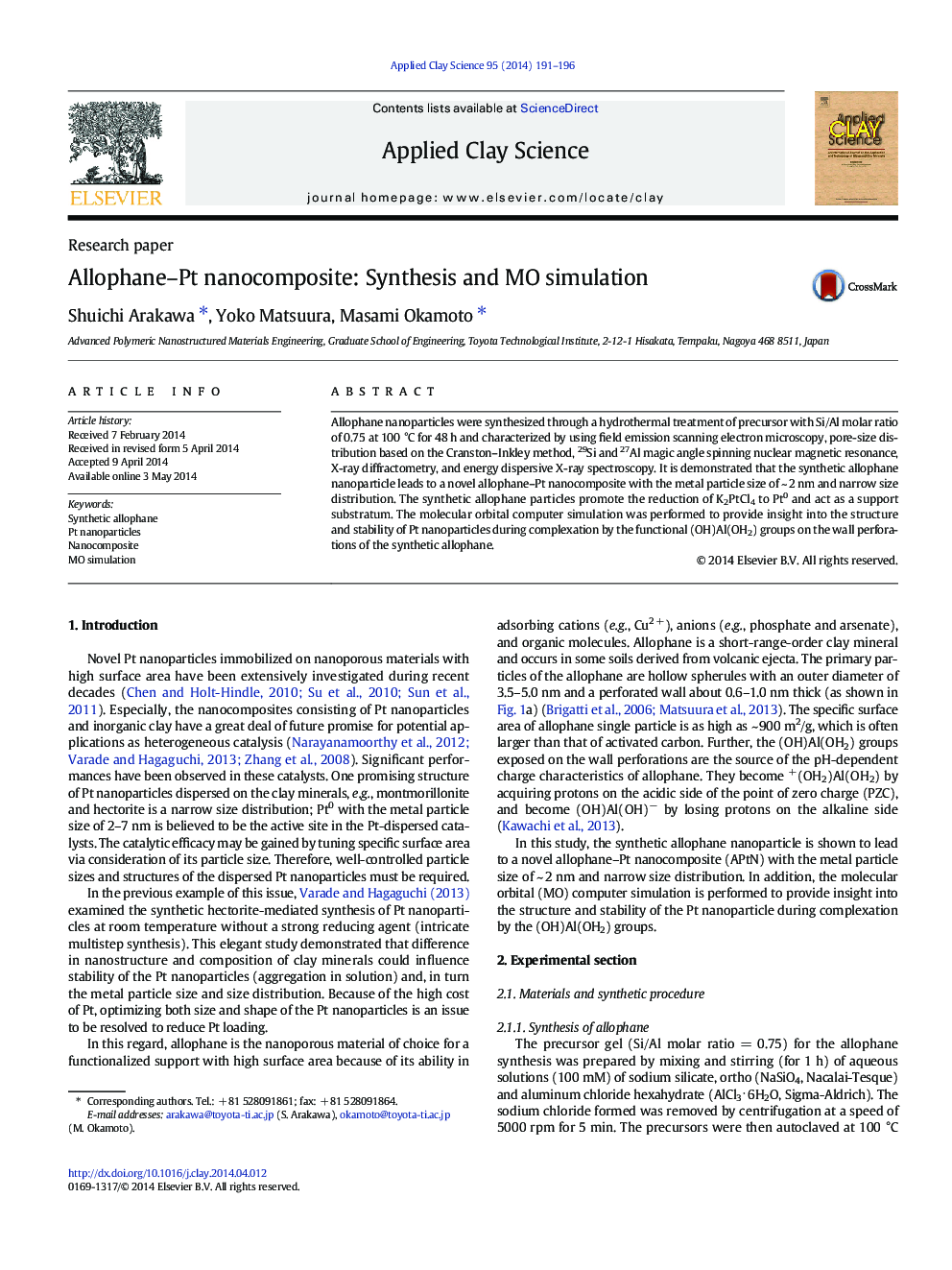| Article ID | Journal | Published Year | Pages | File Type |
|---|---|---|---|---|
| 1694809 | Applied Clay Science | 2014 | 6 Pages |
•Hollow allophane nanoparticle was successfully prepared via a hydrothermal process.•2 nm Pt particles with narrow size distribution dispersed highly on allophane.•The allophane particle promotes the reduction of K2PtCl4 to Pt0 and act as a support.•MO simulation showed that Pt metal forms bonds stably with (OH)Al(OH2) at perforation.
Allophane nanoparticles were synthesized through a hydrothermal treatment of precursor with Si/Al molar ratio of 0.75 at 100 °C for 48 h and characterized by using field emission scanning electron microscopy, pore-size distribution based on the Cranston–Inkley method, 29Si and 27Al magic angle spinning nuclear magnetic resonance, X-ray diffractometry, and energy dispersive X-ray spectroscopy. It is demonstrated that the synthetic allophane nanoparticle leads to a novel allophane–Pt nanocomposite with the metal particle size of ~ 2 nm and narrow size distribution. The synthetic allophane particles promote the reduction of K2PtCl4 to Pt0 and act as a support substratum. The molecular orbital computer simulation was performed to provide insight into the structure and stability of Pt nanoparticles during complexation by the functional (OH)Al(OH2) groups on the wall perforations of the synthetic allophane.
Graphical abstractFigure optionsDownload full-size imageDownload as PowerPoint slide
